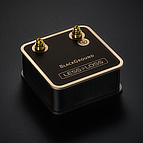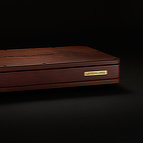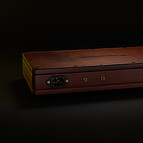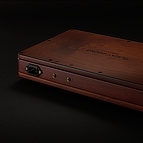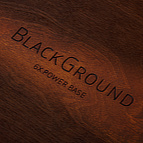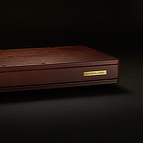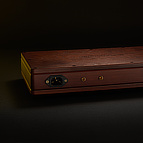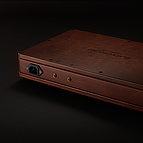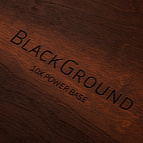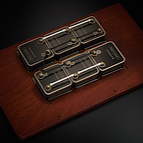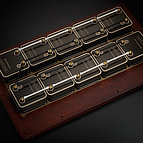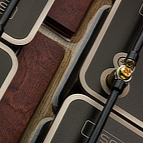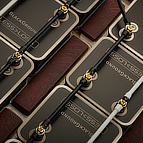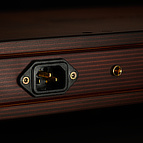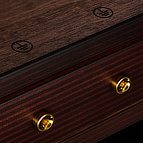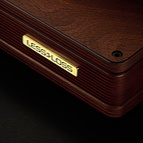
BlackGround 6x/10x Power Base is a plug-and-play power line conditioner like no other. It is based on the innovative new BlackGround modules developed by LessLoss. One 10x Power Base houses 10 inter-connected BlackGround units. The elegant, polished, lacquered, and streamlined enclosure is plug-and-play ready. No user assembly required. Simply connect a power cord to its power inlet. For size and weight information click on the photo gallery thumbnails above. For usage instructions, see the descriptions below. BlackGround 6x/10x Power Base now available!Both units are suitable for any power voltage from 100V-250V AC.There's a laser engraved logo on top. The 6x version states 6x instead of 10x. 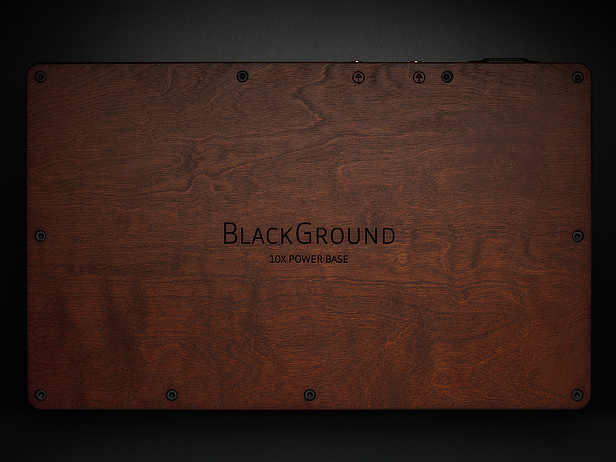
A high performance power inlet at the back. This inlet is bonded tightly with special adhesive which melts the outer shell of the inlet into the enclosure's wood structure itself for maximum vibration control. 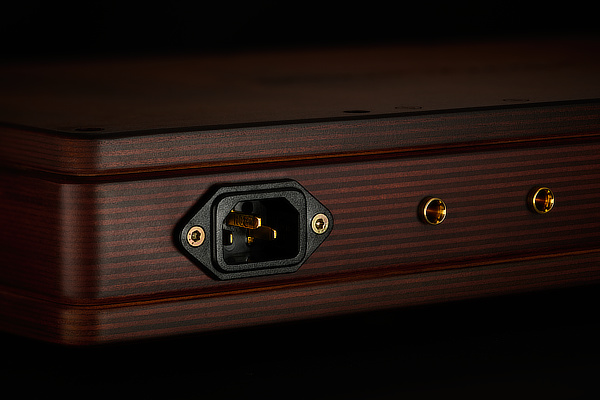
This inlet provides all the BlackGround modules within with the Live line voltage, the Neutral (return) line voltage, as well as the Ground line. Nothing else needs to be connected to this device in order for it to work. All flexible leads within are C-MARC™ Large size hook-up wire with additional thin white insulation for added protection for the power voltages. This device does not draw current, so the Large size C-MARC™ hook-up wire is plenty. 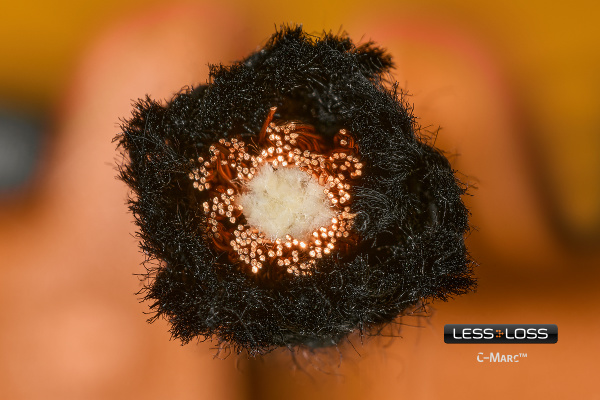
This is a special Litz wire with individually lacquered conductors. Much work goes into preparing the ends for electrical contact. Later in the production process, these are formed and tinned according to application, then soldered to either Ring terminations or connector contacts. The 10x model has two rows of 5 BlackGrounds each. 5 are used for Live/Ground interfacing, and the other 5 for Neutral (return) line/Ground interfacing. The 6x model has two rows of 3 BlackGrounds each. 3 are used for Live/Ground interfacing, and the other 3 for Neutral (return) line/Ground interfacing. You can read more about LessLoss BlackGround technology here. 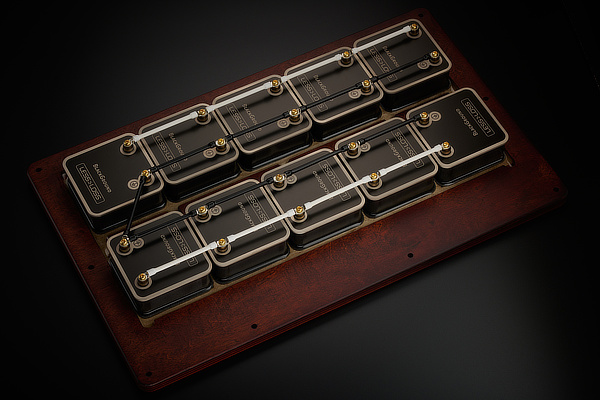
The unit is the same size as our Echo's End DAC enclosures. As you can see, 10 BlackGrounds completely fill the space inside the streamlined enclosure. Dimensions- Width 375 mm- Depth 230 mm (add a few mm for the connectors at the back) - Height 55 mm (add 38 mm to the height if you use the Bindbreaker equipment feet) Inter-connecting the various BlackGround modules are our special Jumpers tailor made for this purpose. They are made available to the DIY enthusiast, and we use them, too. They feature 4mm^2 solid copper bars and eyelet terminations. Soldered of course, not crimped! 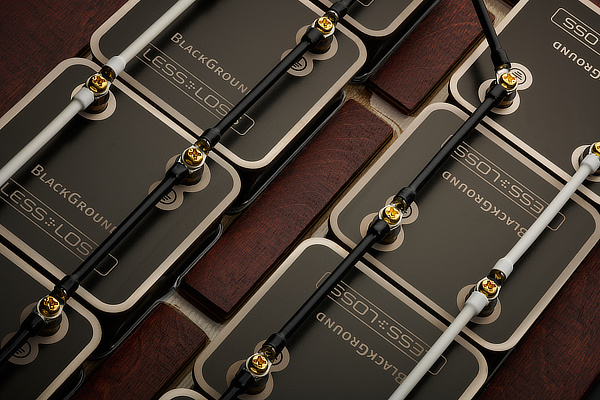
There are two terminals at the back made for banana terminations. These are marked with the ground symbol. These are connected to ground potential within the 6x/10x Power Base (This is the same building ground potential which is provided by the power cord you use with this unit.) These terminals are for future expansion if you later use the 8x/10x Speaker Base units. This way you simply share the ground potential between units directly instead of relying on separate power cords on each one. 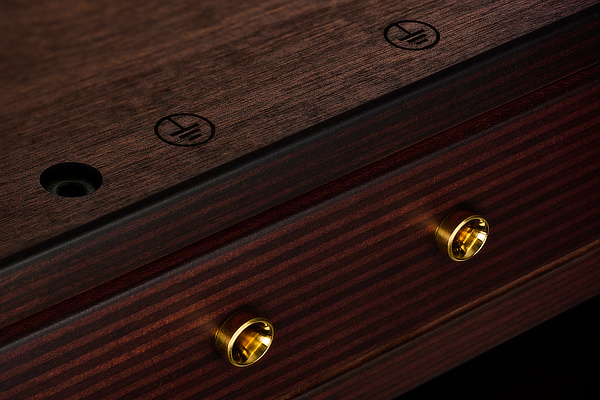
Our custom hand-made brass placard with the LessLoss logo is featured on the front of the unit. 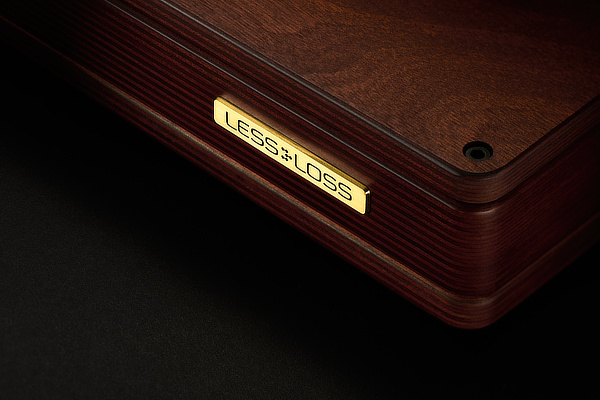
It ships in our water tight specially made custom flight case, of the same type we use for our Echo's End DACs. FAQWhat is the wiring diagram?This is the wiring diagram inside the 10x Power Base: 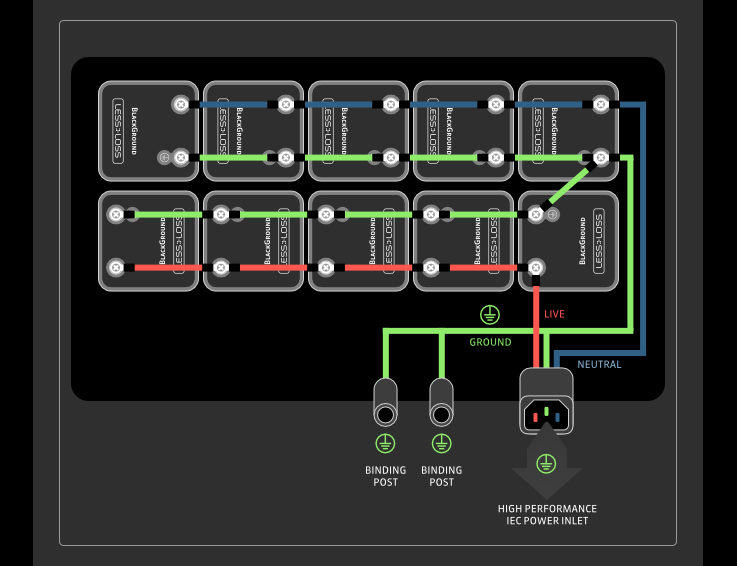
The wiring diagram for the 6x Power Base is the same as above, only instead of two rows of 5 BlackGround modules, there are two rows of 3 BlackGround modules onboard.
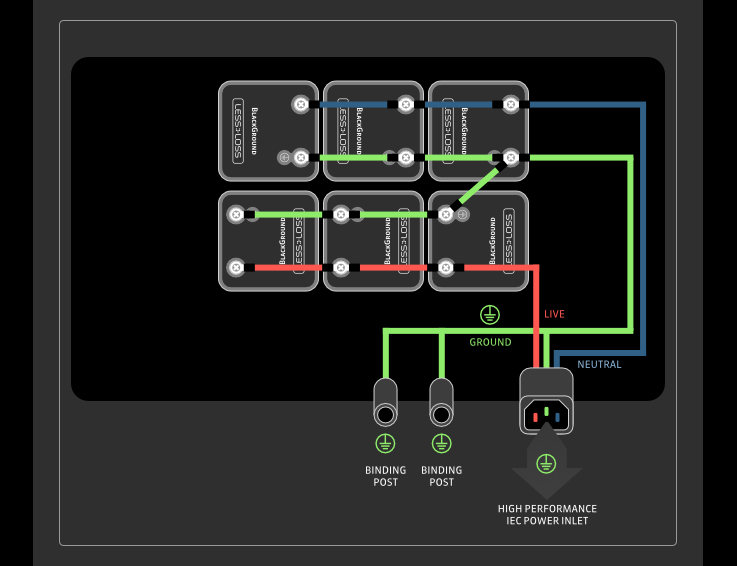 How does the Firewall 640x and Firewall for Loudspeakers compare to the new BlackGround device?
One should consider the Firewall 640x (and Firewall for Loudspeakers) as current conditioners, since the currents in question in fact flow right through the conditioner. The new BlackGround interface, however, is a voltage conditioner, since no currents flow through the device. Instead, with the BlackGround, we tap the existing voltage at each signal conductor (regardless of whether it is AC or DC, positive (send) or negative (return)). This real-time voltage, regardless of what it is, is routed to the BlackGround device on one terminal. The other terminal marked with the ground symbol is connected to the ground voltage of the building; this is really the ground potential of the Earth itself, because the building's ground is a physical conductive stake in the ground.
Why? What's the point here?
High energy particles traverse space at near light speed. The highest energy subatomic particle observed scientifically (so far) was named the OMG particle.
"...equivalent to a 142-gram (5 oz) baseball travelling at about 28 m/s (100 km/h; 63 mph)." Oh My God particle We are surrounded by layers of protection. The first of these is the Sun's magnetic field. The field does this shielding (actually, bending) for the highest, most deadly, energetic cosmic particles. The Earth's magnetic field is yet another layer of protection. The Earth's magnetic field bends remaining ionic radiation towards the poles. But some still gets through, and at this point we already know its statistically most likely angle and direction given our location on the crust of the Earth. Muons and other subatomic particles constantly travel directly through buildings, ground, even our own bodies. This radiation is everywhere. If we can’t adequately shield ourselves from this inevitable cosmic influence, and we can’t dig an audiophile’s protection cave several kilometres underground in granite, we can at least seek ways to, in a way, "raise" the desirable features of the Earth's protection and implement them in an elegant, concerted way, directly at the signal's existing potential level instead of at the EM surroundings level, which for cosmic particles is simply inconsequential. You can shield all you want using traditional means, to no avail. Lightning rods operate by raising the ground potential up to their ionising tip, making it far more likely for lightning to strike them rather than nearby rooftops or other exposed raised structures such as power stations. The following analogy with Baseball will serve (ha!) to explain. 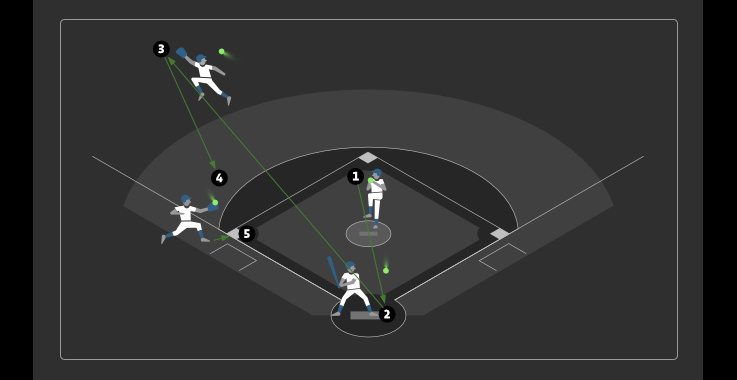
Baseball analogy: The baseball is the cosmic charged particle. The pitcher is the source of the cosmic particle (supernova or whatever) [1.] and the batter is the cosmos which flings the particle in question out towards the Earth [2.]. The catcher out in the field is the Blackbody, aimed at the proper angle and direction, ready to catch. [3.] Through a grounding wire he throws the impulse as quickly as he can to the baseman. The baseman represents the BlackGround signal-ground interface. [4.] He catches the throw with his glove, and with his shoe, stands on the base (ground potential) without actually physically tagging the runner (no electrical contact is made) [5.]. This represents the score's neutralisation. Particle is dealt with. Team Cosmic, you're out! The cheer from the stands of our team, team Sonic, can be heard for miles.
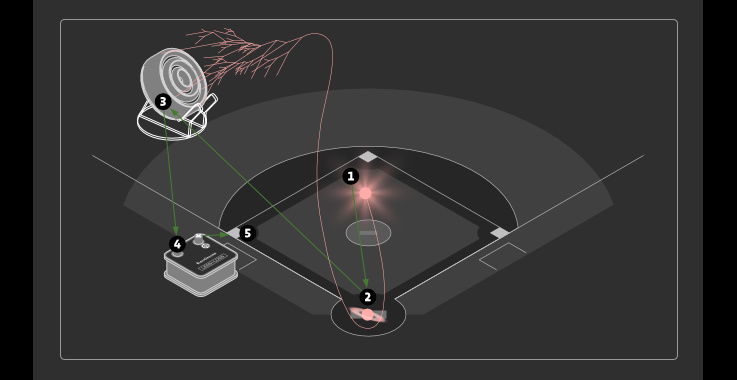 Is that a sort of vibration-absorbing pad under the BlackGrounds in the photo of the open device?Under the BlackGround modules themselves is a milled depression of 5mm into whose base are drilled multiple dimples. Clear epoxy resin is used here in this basin in order to fill all the dimples and so that its surface level is well above the 2mm height of the BlackGround modules' extended lip metallic bases, thus creating immediate acoustic and structural bonding to the wooden base of the 10x Power Base enclosure. The color difference you may see is the color of the pure Baltic Birch with no lacquer layer at that crucial interface. The multiple dimples create much more surface area such that the epoxy has no chance of popping off or cracking, without the need of using polyurethane "sticky" materials which never dry completely and result in a slightly muddy, rubbery sound quality, just like the deleterious effects of rubber based equipment feet if you're familiar with that sort of thing. Any springy action at junctions of two materials lends a more rubbery sound. Therefore with our solution we have very close to ideal acoustic transfer of even the smallest micro-vibrations directly from the acoustically 'fast' metallic transfer of resonant energy directly into the matrix of cellulose fibre which makes up wood. This gives a rich, detailed sound without adding foreign sonic effects. There exist many so-called 'grounding boxes' in the market today. Is BlackGround one of these?Absolutely NOT, but only in a way, yes. These solutions which offer many ground connections and in their own ways condition the ground plane of the entire system, tap ground potential in different places throughout the system. But according to our understanding, they only go a part of the way, and they are belated in their treatment even at that. These devices are purported to try and capture "EMI/RFI" small signals traveling everywhere in our audio systems and transform them into heat. However this is not the precise concept behind the BlackGround technology. With the BlackGround technology, LessLoss takes a different approach. If your solution is even worrying about "EMI/RFI" existing throughout the system, it is already too late. These signals are AC signals, and in order for them to fluctuate, they need a send path and a return path. There are always going to be such undesirable oscillations in high frequencies throughout a system, but it is the job of the designer of the gear to deal with each at their source. You really must think of BlackGround as addressing a far more pervasive and universal issue, and that is the issue of cosmic ionic particle precipitation. Think of this as a foreign element in our pristine audiophile world of prized signals. Think of this also as a form of constant rain on our picnic. It can be a drizzle or it can be a thunderstorm. We are not in control of it, but we can use what we know of it to our advantage. It will always persist no matter what we do, but we can guide it using BlackGrounds to where it will not cause the subtle EMI/RFI loops mentioned above. Those AC currents are on both the ground lines, as well as on the signal lines. Every conductor interacts with its surroundings. But even the term 'surroundings' implies differentiating between signal and the EM field. This is a fallacy. The signal is every bit made up of the very subatomic interactions which permeate all matter. Otherwise we'd have liquid copper flowing through tubes of non-conductive material. If we deal with interference only on the ground lines we are only capturing half the issue. There are plenty of signal/ground interfaces within a system already. Basically any resistor is such an interface. Any load is as well. This is the real "heat" mentioned above in the third sentence of this answer. This load is in fact the burning of signal to some end. For us as audiophiles the primary end we are most familiar with is the physical driving of the loudspeaker in the form of vibrations. Heat is the loss of any resistor, coil or load. Perhaps some images will serve us well here. Consider the images below as idealised snapshots of cosmic precipitatory subatomic particle interaction. What you need to realise is that we are not speaking of billiard balls and we are certainly not speaking about one thing happening after another in a simple string of events on a simple one dimensional timeline. When dealing with high energy subatomic particle precipitation we cannot lose sight of how exotic the concepts here are. For instance, the OMG particle mentioned a few questions above was travelling very near to the speed of light. "At this speed, if a photon were travelling alongside the particle, it would take over 215,000 years for the photon to gain a 1 cm lead, as seen from the Earth's reference frame." We are not equipped here to go into a full-blown scientific discussion of the actual theory involved, but suffice it to say that there are relativistic concepts at play here which make the baseball analogy above somewhat misleading. Just think about the following images as not necessarily happening on a single time-line, with some interactions having a jump start in front of others, and recall as well the famous post-graduate course question which asks what the length of a single Photon is, given certain conditions in a room, with the correct answer coming out to being about one meter(!) in length. So for your imaging you can forget raindrops and billiard balls and all manner of simple colliding. This stuff is much more exotic. And let us not forget that even our signals are made of subatomic particles. 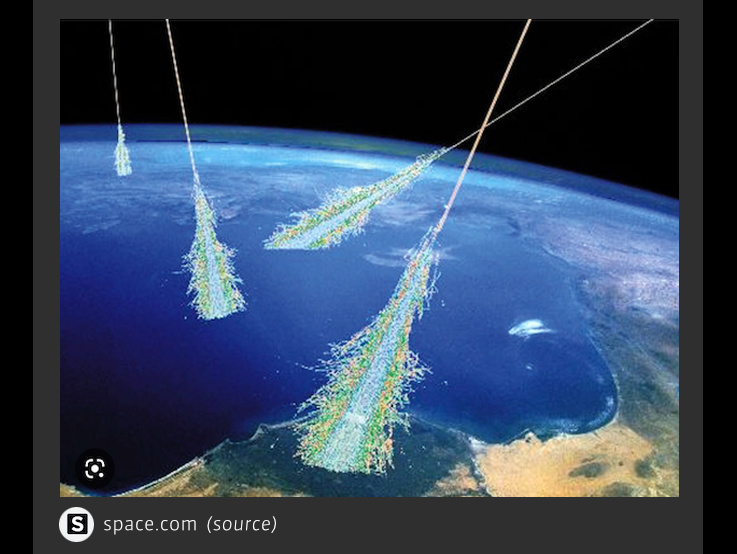 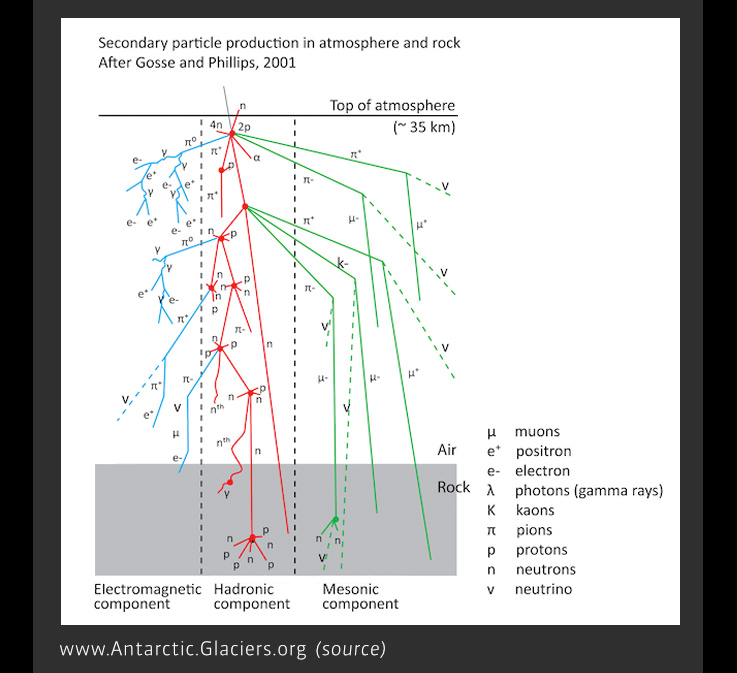 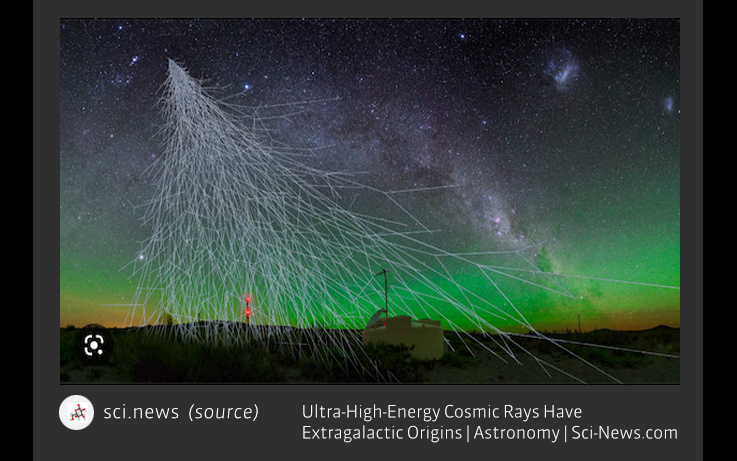 How else can you simply explain the core functionality of the BlackGround?
One can approach this by starting from the concept of how how lightning rods work. A lightning rod is a conductive extension of the ground potential up into the sky. At the top it is pointy, and this means that a small corona discharge occurs at this place. Why? There is a concept called atmospheric voltage. The further up you go from the surface of the earth, the higher the atmospheric voltage. It goes up at about 100V per meter. Once you get up to the Ionosphere, you are dealing with conductive plasma. When you extend the ground's voltage up to higher voltage surroundings, you get a large voltage potential (difference) at the tip of the lightning rod. When high voltage lightning discharge occurs, it seeks ground potential. Since ground potential is "piercing" the sky at the tip of the lightning rod, the lightning will naturally choose that path as the path of least resistance. You can watch this video:
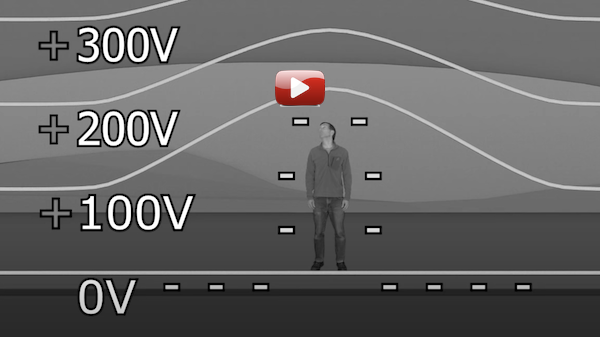
Now take mental snapshots of time during which the various voltages in a sound system fluctuate. This is like the ions in the air from the video. They are not at ground potential. They fluctuate in real time, whereas the atmospheric voltage is more or less static. In addition, there are sources of noise coming from the continuous cosmic ionic particle bombardment. Ideally we want this bombardment to find an electrical path which will not interfere with our various signals. Enter BlackGround, our solution by which, when pairing real-time voltages in the sound system with the ground potential, we have in effect generated a continuous lower impedance path for the cosmic ionic particle 'rain' to follow. Any electrical discharge will always choose the lowest impedance path. It represents a lower impedance path because the BlackGround is always at the same voltage that the signals are at. In this sense we keep the resistance path between noisy atmospheric voltages and the ground at the lowest we can possibly muster. Thus, the noise from cosmic radiation chooses this path and is dealt with even before it interferes with the prized signals we want to protect from these interactions. In fact, because the path presented is in real time following the signal voltages, it can be said that the signals themselves now become the conductor for the foreign noise instead of succumbing to intermodulation by it. The reason more and more BlackGrounds (and Blackbodies) are effective is that with every additional unit we are lowering and lowering this impedance path, so the results in terms of sonic purity are better and better as statistically less and less intermodulation occurs. |
- Products
- Power Cables
-
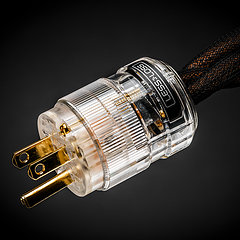 C-MARC™ Prime
The must have foundation for any sound system today.
From
$
486
C-MARC™ Prime
The must have foundation for any sound system today.
From
$
486
-
 C-MARC™ Classic
The unique super-cable power cord everyone's talking about.
From
$
1148
C-MARC™ Classic
The unique super-cable power cord everyone's talking about.
From
$
1148
-
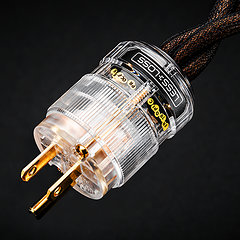 C-MARC™ Classic Entropic Process
The peerless, advanced Classic masterpiece.
From
$
1934
C-MARC™ Classic Entropic Process
The peerless, advanced Classic masterpiece.
From
$
1934
-
 C-MARC™ Stellar Entropic Process
The crown jewel for highest performance power connection.
From
$
2450
C-MARC™ Stellar Entropic Process
The crown jewel for highest performance power connection.
From
$
2450
-
- Loudspeaker Cables
- Interconnect Cables
-
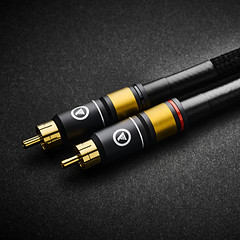 RCA C-MARC™
Cotton-clad true Litz • Whopping 2.3mm2 polarities
From
$
850
RCA C-MARC™
Cotton-clad true Litz • Whopping 2.3mm2 polarities
From
$
850
-
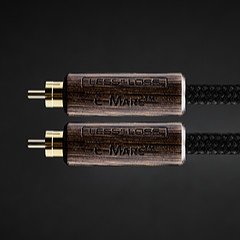 RCA C-MARC™ Entropic Process
Our finest RCA cable • Polished Wenge barrels
From
$
1428
RCA C-MARC™ Entropic Process
Our finest RCA cable • Polished Wenge barrels
From
$
1428
-
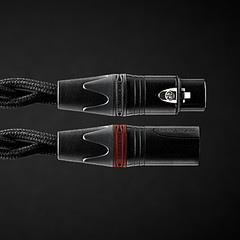 XLR C-MARC™
A hand-braided cotton-clad unique Litz construction
From
$
950
XLR C-MARC™
A hand-braided cotton-clad unique Litz construction
From
$
950
-
 XLR C-MARC™ Entropic Process
Stratospheric performance for the audio connoisseur
From
$
1615
XLR C-MARC™ Entropic Process
Stratospheric performance for the audio connoisseur
From
$
1615
-
- Digital Cables
-
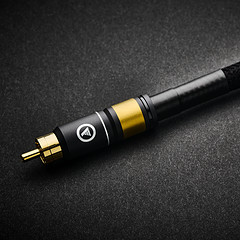 RCA Digital C-MARC™
Cotton-clad unique Litz design • Made only by LessLoss
From
$
510
RCA Digital C-MARC™
Cotton-clad unique Litz design • Made only by LessLoss
From
$
510
-
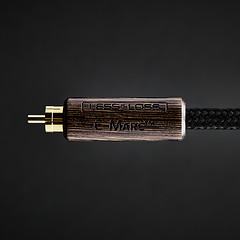 RCA Digital C-MARC™ Entropic Process
Possibly the most subtle digital cable on the planet
From
$
858
RCA Digital C-MARC™ Entropic Process
Possibly the most subtle digital cable on the planet
From
$
858
-
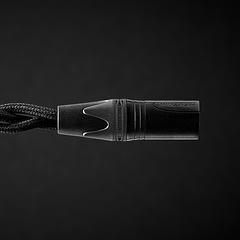 XLR Digital C-MARC™
Featuring a whopping 3 x 2.3mm2 Litz construction
From
$
570
XLR Digital C-MARC™
Featuring a whopping 3 x 2.3mm2 Litz construction
From
$
570
-
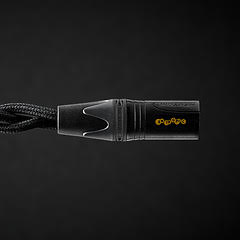 XLR Digital C-MARC™ Entropic Process
Stratospheric performance for the audio connoisseur
From
$
969
XLR Digital C-MARC™ Entropic Process
Stratospheric performance for the audio connoisseur
From
$
969
-
- Grounding Cables
- Bulk Wire and Cable
- Signal Conditioners
-
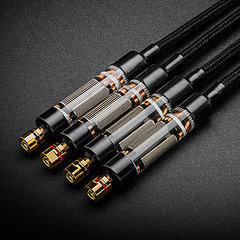 Firewall for Loudspeakers
Firewall for Loudspeakers
C-MARC™ Plug-and-Play Speaker signal conditioning like you've never imagined From $ 1656 -
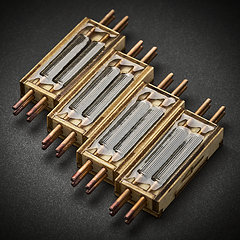 Firewall for Loudspeakers
Firewall for Loudspeakers
DIY version for Self-Installation For the Do-It-Yourself project enthusiast • Solder yourself From $ 800 -
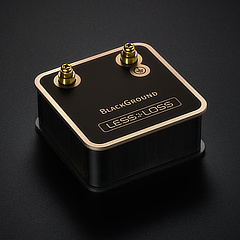 BlackGround DIY
Voltage-ground interface for a variety of applications
From
$
446
BlackGround DIY
Voltage-ground interface for a variety of applications
From
$
446
-
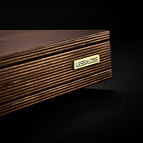 BlackGround 8x/10x Speaker Base
Plug-and-play loudspeaker signal conditioner
From
$
3096
BlackGround 8x/10x Speaker Base
Plug-and-play loudspeaker signal conditioner
From
$
3096
-
- Power Conditioners
-
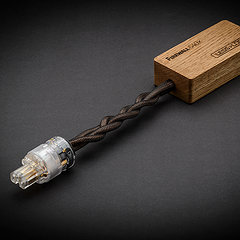 Firewall 640x
Plug-and-play solution for any powered gear
Firewall 640x
Plug-and-play solution for any powered gear
C-MARC™ Entropic Process and standard lead versions From $ 654 -
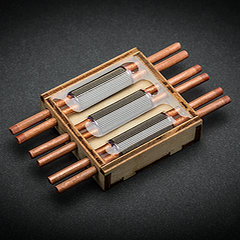 Firewall 640x DIY for Self-Installation
Self-solder and save!
From
$
320
Firewall 640x DIY for Self-Installation
Self-solder and save!
From
$
320
-
 BlackGround DIY
Voltage-ground interface for a variety of applications
From
$
446
BlackGround DIY
Voltage-ground interface for a variety of applications
From
$
446
-
 BlackGround 6x/10x Power Base
Plug-and-play power conditioner
From
$
2350
BlackGround 6x/10x Power Base
Plug-and-play power conditioner
From
$
2350
-
- Power Distributors
- Equipment Feet
- Field Conditioner
- DACs
- Power Cables
- Reviews
- This is definitely the cable to go for. It will almost literally blow your mind. – March 2012, Puresound Magazine
-
I was intrigued by the unanimously positive reviews garnered by these products ...
– by user Raymond Eye
Leaves you speechless
Sensational cables
BEST purchase I've made
Top notch performance
It's a steal
Musical... liquid... 3D
It's not subtle
More than an upgrade
Best I've heard so far
Stellar service
Sounds like a new system
Much more lifelike
Emotional flow
Overwhelming results
More dimensional
Sound is transformative
We were all astounded
Transformed my listening
Sounds so cohesive
Emotionally engaging
- Where to Start
- Free Newsletter
- Newsletter Archive
- B-Stock Alerts
- Shopping Tools
-
Shipping
- Free Shipping Learn about our international shipping policy
-
Return Options
Our satisfaction guarantee
and return policy -
Customs / Tax
UPS expedites local
customs clearance
-
Transaction
- Conditions of Sale Agreement for a smooth business transaction
- Privacy Policy We pledge to keep your information private
-
Terms of Use
Business policies
and agreements
-
Account
-
- Contact Us
-
Meet the Designers
-
- Care to share of your personal experience with our products? We'd be happy to post it!
- Want to learn more about our activities? Our Newsletter is both free and spam-free.
hi-res photos, brochures
logos, press releases, and
print-friendly PDF downloads. -
Contact Us
Connect with Us
-
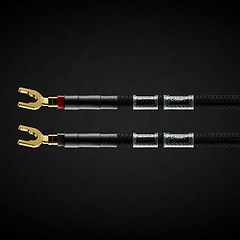
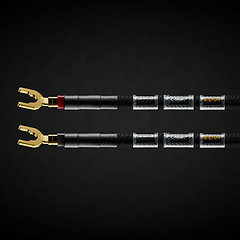
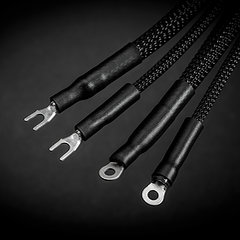
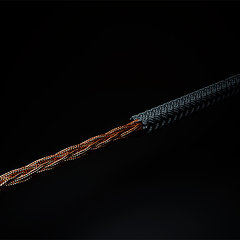
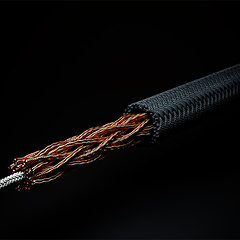
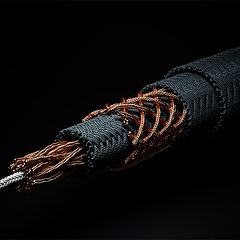
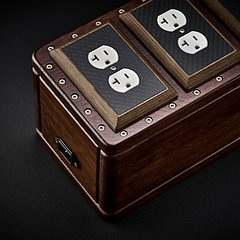
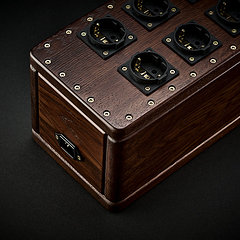

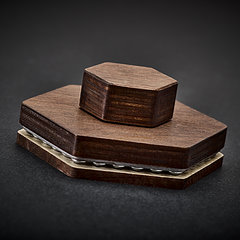
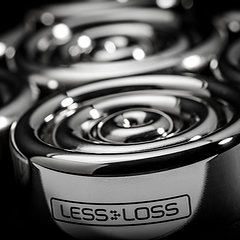
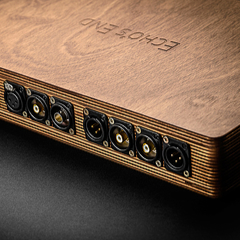
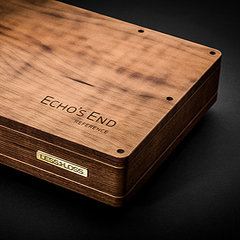
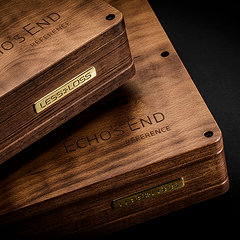
 Beware of Fakes
Beware of Fakes

